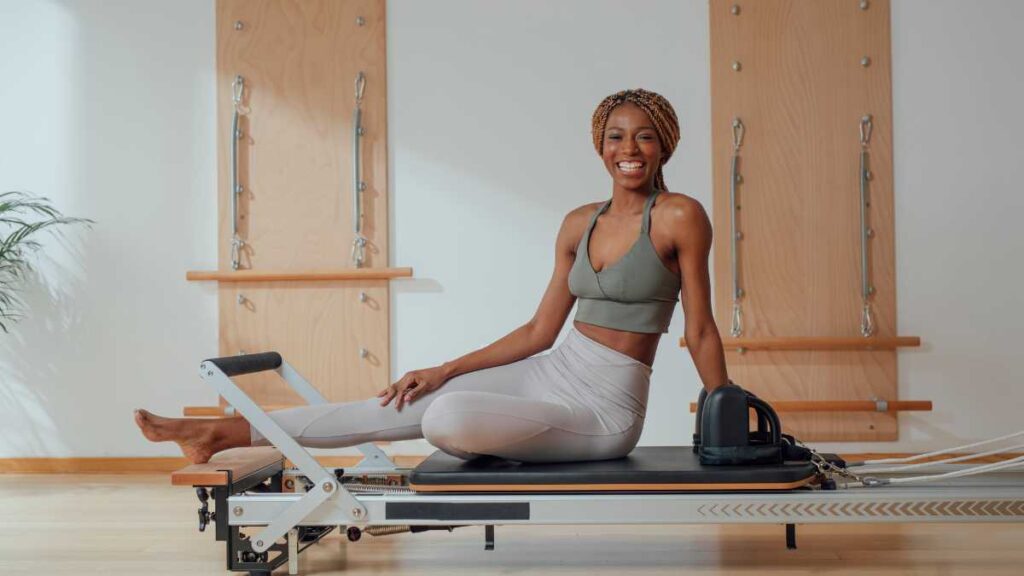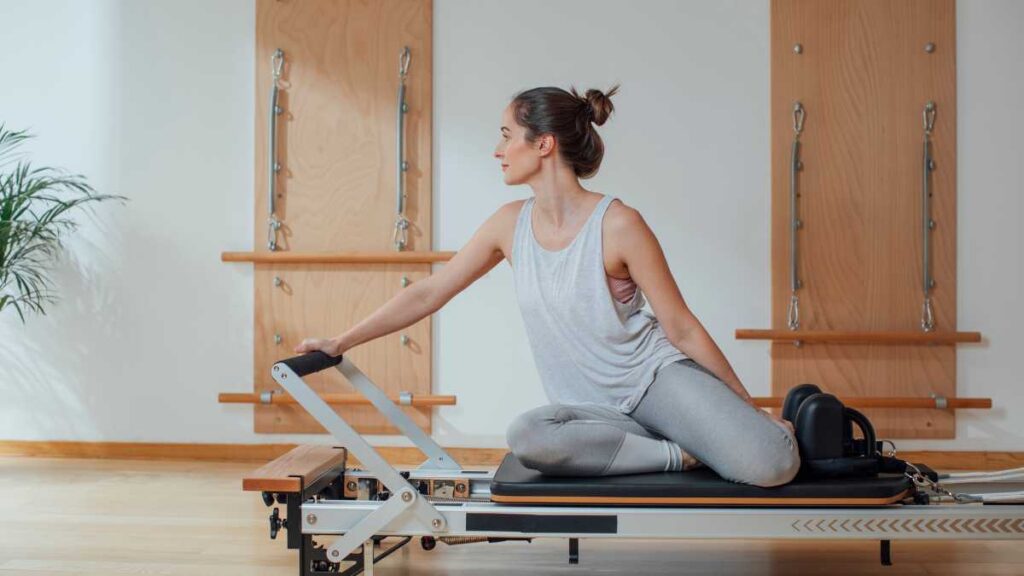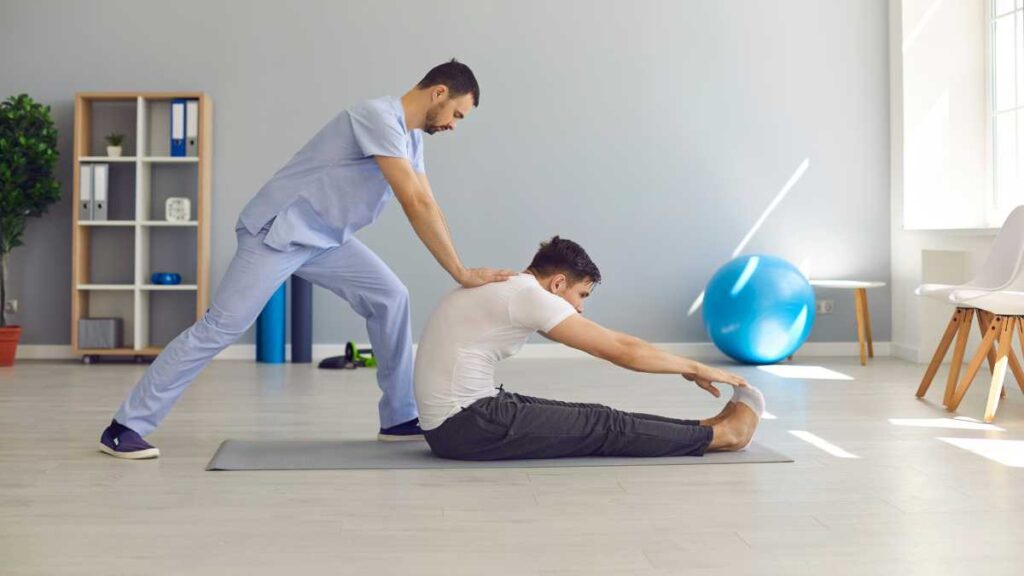A patient once told me, “I’ve tried everything—painkillers, massages, even chiropractic care—but my back pain keeps coming back.”
Chronic lower back pain is one of the most common complaints I hear, especially from people who sit for long hours or struggle with poor posture.
They often ask, is Pilates good for back pain? Yes, it strengthens the core, improves posture, and relieves spinal strain.
But many hesitate, thinking Pilates is only for dancers or fitness enthusiasts.
In reality, it’s a therapeutic movement practice that’s backed by science and recommended by physical therapists for pain relief.
What Makes Pilates Different?

Unlike other forms of exercise that might strain the lower back, Pilates focuses on gentle, controlled movements that restore core strength, spinal mobility, and postural balance.
It teaches the body to move efficiently, reducing unnecessary stress on the spine and supporting muscles.
If you’ve been relying on painkillers, temporary fixes, or exercises that don’t seem to work, Pilates might be the missing piece to your recovery.
Let’s explore how it works, what science says, and how to practice it safely for the best results.
Why Pilates Works For Back Pain
Unlike high-impact workouts that stress the spine, Pilates focuses on controlled, intentional movements that engage deep core muscles.
This creates a stable foundation for the lower back, reducing unnecessary strain and promoting spinal health.
Strengthens Deep Core Muscles
A weak core forces the lower back muscles to work overtime, leading to muscle imbalances and pain.
Pilates activates key stabilizing muscles like the transverse abdominis, multifidus, and pelvic floor, creating a natural brace for the spine.
This added support helps distribute movement more evenly throughout the body, preventing excess pressure on the lumbar spine.
Improves Postural Alignment
Slouching, uneven weight distribution, and poor sitting habits place unnecessary stress on the spine and surrounding muscles.
Pilates promotes neutral spine alignment, teaching the body to maintain proper posture during daily activities. With time, this reduces excess strain on the back, preventing pain from worsening.
Enhances Spinal Mobility
Restricted movement in the vertebrae often leads to stiffness and discomfort, especially in the lower back.
Pilates incorporates spinal articulation exercises that gently mobilize the thoracic and lumbar spine, improving flexibility and easing tension.
This makes daily movements—like bending, twisting, and reaching—more fluid and pain-free.
Better movement, less pain—Pilates delivers both.
Scientific Evidence – What Research Says
Pilates isn’t just another wellness trend—it’s scientifically validated as an effective approach to managing chronic lower back pain.
Several studies have explored its benefits, proving its role in pain reduction and functional improvement.
A systematic review analyzed multiple clinical trials and found that Pilates significantly reduces chronic lower back pain while improving functional movement and spinal flexibility.
Another study showed that Pilates enhances muscle endurance, providing long-term pain relief for those with non-specific lower back pain.
One research compared Pilates to traditional physical therapy and found that Pilates provided better functional outcomes, with patients reporting greater improvements in mobility and pain levels.
Essential Pilates Exercises For Back Pain Relief

Not all Pilates exercises are suitable for back pain management. The best ones focus on stability, flexibility, and controlled movement, ensuring that the spine remains supported and free of unnecessary strain.
Pelvic Tilts
Why it works: Gently mobilizes the lumbar spine and activates deep core stabilizers.
How to do it: Lie on your back with knees bent and feet flat on the floor. Tilt your pelvis upward, pressing your lower back into the mat. Hold for a few seconds and release. Repeat 10–15 times.
Bridges
Why it works: Strengthens the glutes, relieves pressure from the lower back, and improves hip stability.
How to do it: Lie on your back with your knees bent. Press through your heels and lift your hips until your body forms a straight line from shoulders to knees. Lower slowly.
Spine Stretch Forward
Why it works: Encourages spinal decompression and stretches tight back muscles, reducing tension in the lumbar region.
How to do it: Sit tall with your legs extended in front of you. Extend your arms forward and slowly reach toward your toes while keeping your spine long. Hold for a few breaths, then return to the starting position.
Controlled Leg Lifts
Why it works: Enhances pelvic stability and prevents lower back strain by engaging the deep core muscles.
How to do it: Lie on your back with your legs bent. Engage your core, then slowly lift one leg at a time while keeping your lower back neutral. Avoid arching the spine.
Move smarter, not harder—protect your back with Pilates.
Who Should Be Cautious With Pilates?
While Pilates is safe for most people, those with certain conditions need to be extra careful. If done incorrectly, some movements may worsen back pain or cause further injury.
Individuals With Herniated Discs
A herniated disc occurs when the soft inner gel of a spinal disc pushes out, irritating nearby nerves.
Some Pilates exercises, like deep spinal flexion (e.g., roll-ups and full sit-ups), can increase pressure on the discs and worsen symptoms.
Safe approach: Stick to neutral spine exercises, avoid excessive bending, and work with a Pilates instructor experienced in injury recovery.
Those With Severe Spinal Stenosis
Spinal stenosis happens when the spinal canal narrows, compressing the nerves.
Movements that involve excessive back extensions, like the Swan Dive or Cobra, can make symptoms worse by further compressing the spinal cord.
Safe approach: Focus on gentle core strengthening, pelvic stability exercises, and controlled stretches that don’t force the spine into extreme positions.
People Recovering From Back Surgery
After spinal surgery, the tissues, muscles, and ligaments need time to heal. Jumping into Pilates too soon—especially without modifications—can delay recovery and increase the risk of re-injury.
Safe approach: Follow your doctor’s or physical therapist’s guidelines. Start with low-impact movements like pelvic tilts, bridges, and breathwork-based exercises.
Anyone Experiencing Acute Back Pain or Inflammation
If you’re in the middle of a back pain flare-up, certain Pilates exercises can put too much strain on the affected area, making the pain worse.
Safe approach: Allow the inflammation to settle first. Once the pain is manageable, start with basic stability exercises under expert guidance.
Since incorrect forms can worsen back pain symptoms, it’s best to work with a certified instructor or physical therapist who can tailor a safe and effective program for you.
Pilates isn’t one-size-fits-all, but it fits most.
How to Start Pilates Without Making Your Pain Worse

Starting Pilates without proper guidance can backfire, especially if you already have back pain. Here’s how to do it safely and effectively.
Work With a Certified Instructor
A trained Pilates instructor understands spinal biomechanics and can help modify movements to suit your back pain needs.
They ensure you maintain proper alignment, controlled movements, and core engagement, preventing unnecessary strain.
How to find the right instructor?
- Look for someone certified in rehabilitative Pilates or clinical Pilates.
- If you have an existing injury, choose an instructor who has experience working with spinal conditions.
- Ask for one-on-one sessions before joining a group class to ensure personalized attention.
Begin With Gentle, Low-Impact Movements
Jumping into advanced Pilates routines too soon can overload the spine, leading to more pain. Start with foundational exercises that focus on:
- Core stability (e.g., pelvic tilts, bridges)
- Postural awareness (e.g., seated spine stretches)
- Controlled breathing (to engage deep core muscles)
- Avoid anything that causes discomfort. Pilates should feel challenging but not painful.
Modify Exercises to Suit Your Needs
Not all Pilates movements are suitable for people with back pain. Some exercises—like roll-ups, full sit-ups, and deep spinal twists—may increase discomfort.
- If an exercise feels too intense, reduce the range of motion.
- Keep your spine neutral rather than forcing it into extreme flexion or extension.
- Use props like a stability ball or resistance band for extra support.
Pain is a signal, not a challenge—listen to your body.
Stay Consistent for Best Results
Pilates isn’t a quick fix—it works best with regular practice. Aim for 2–3 sessions per week, focusing on:
- Core strength to support the spine
- Postural correction to prevent unnecessary strain
- Flexibility works to reduce stiffness
You don’t need to spend hours exercising—15 to 30 minutes per session is enough to see the results over time.
Conclusion – Is Pilates Good For Back Pain?
If you’re struggling with chronic back pain, Pilates is more than just a workout—it’s a science-backed solution that can help restore your spinal health, mobility, and strength.
Unlike temporary fixes like painkillers or passive treatments, Pilates addresses the root cause of back pain by strengthening the deep core muscles, correcting posture, and improving spinal flexibility.
Studies confirm that regular Pilates practice can lead to significant improvements in pain levels, movement, and overall quality of life. But like any exercise, the right approach matters.
To see real benefits, it’s important to start with beginner-friendly, low-impact exercises, work with a certified instructor, and stay consistent in your practice.
Pilates isn’t a quick fix, but with time and commitment, it can help you move freely and pain-free again. If standard treatments haven’t worked for you, this might be the change your body needs.
Why not give it a try? Your spine, core, and overall health will thank you.












